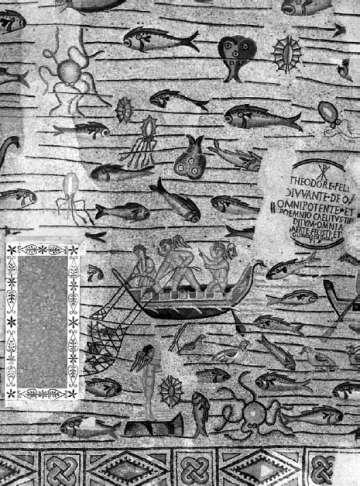Editorial
The fifth issue of Word and Sense was conceived as our personal belated dialogue with a friend and colleague who no longer converses with us at a single table in “festive array,” but to whose words we are still wont to listen with rapt attention. Jan Lehár, a scholar who moves with silent sovereignty through the centuries of Czech literature, inspired us to attempt to stimulate discussion of old Czech culture. As specialists in modern and contemporary literature and art, we follow medieval studies from a respectful distance; however, we are aware of the indisputable links between the two, and that aspects of older literature and culture enter repeatedly and in unexpected ways into contemporary thought on art and literature. We have therefore turned to a number and Czech and foreign specialists for their thoughts on these issues, and offered the pages of our journal as a forum. From the very beginning we realized that the topic was very broad, and the range of methodologies and materials quite extensive. This fact is reflected in the final choice of texts for publication. We have included a range of views on various aspects of old literature. Some concern problems that have been meticulously disputed by the narrow circle of Czech medievalists for years, whereas others focus on questions concerning the relations of old Czech literature to modern literature and art. Above all we have endeavored to spark a debate, a dialogue with contemporary scholars who – more often than the journal’s editors – read and analyze texts from the distant past. Understandably, this issue of our journal could only touch upon a small fraction of the problems and concerns that occupy Czech medievalists. Nevertheless, we believe that a reminder of the causal link between the material questions that are addressed through the research of both medieval and modern literature and art will provide an overview that will prove inspiring for both fields.
With the cooperation of the specialists Lenka Jiroušková and Jakub Sichálek, under the heading Studies and Sketches we have included several excellent texts, which will certainly be stimulating for both scholars and the general public: the Parisian fragment of The Dalimil Chronicle edited in detail by Aněžka Vidmanová, and a German work by Eike Juhre on travel writing in the late Middle Ages. In Translations we introduce Paul Zumthor, an authority on medieval literature, in an excerpt from the chapter, “The Voice of the Middle Ages,” from the book La Poésie et la Voix dans la Civilisation médiévale. Milena Bartlová and her graduate students Martina Grmolenská and Jiří Pulkrábek have also contributed valuable articles, focusing on medieval visual culture and conceptual and epistemological questions raised by medieval perception. By a fortunate coincidence, Pulkrábek’s study on The Legend of St. Catherine responds to an older article on the legend by Jan Lehár, which, together with an excerpt from the Legend, we have included in English translation by Kirsten Lodge. Marie Langerová’s text on the Dream-Book of Vavřinec z Březové and the historical conceptualization of dreams, as well as film theoretician Petra Hanáková’s essay analyzing the transformation of looking/watching in the Renaissance and its consequences for the contemporary conception of subjectivity, expand on traditional realms of inquiry in medieval studies. It may seem that the latter articles do not pertain to old Czech culture. However, the way in which they link the art of different eras provides insight into modern times that would other- wise not be possible.
Guided in part by our effort to link medieval studies with the contemporary period, we formulated the text of “A Question for...” from this point of view as well. As editors we gave vent to our tenacious “laymen’s” interest, and perhaps that is why the questionnaire incited such polemical responses this time. Thank you for them! In the ten responses from Czech medievalists – Jirí Hošna, Lenka Jiroušková, Jaroslav Kolár, Jan Malura, Jana Nechutová, Stefan Michael Newerkla, Pavlína Rychterová, Pavel Spunar, František Šmahel, and Anežka Vidmanová – it was evident that medieval literature is not merely a memory, but rather a contemporary challenge.
When we first considered dedicating the fifth issue to the memory of Jan Lehár, it did not occur to us that the Retrospective section would serve to commemorate two other medievalists as well. Světla Mathauserová is remembered through her work on the relationship between Russian and Czech medieval texts, as well as in a portrait by Vladimír Svatoň and a sketch by Libuše Heczková; and Eduard Petrů, a literary historian based in Olomouc, Moravia, is honored through a translation of one of his last studies and a professional portrait by Ivo Barteček, historian and Dean of the Philosophy Faculty of the Palacký University in Olomouc.
The coherence of the issue is intentionally broken by the somewhat “more colorful” Critical Perspectives, which, in addition to reviews of studies of old Czech and Slovak literature, includes a number of articles on monographs of Czech cultural figures and the problem of structural and hermeneutic interpretation.
News, Annotations, and Discussions contains brief descriptions of departments of Czech literature and culture at the Philosophy Faculty of the Palacký University in Olomouc and the University of Glasgow in Scotland.
The last review in this issue is on a monograph of the Flemish artist Jan van Eyck by Jarmila Vacková. The book was awarded the F. X. Šalda Prize for 2005. The review and the book, for the most part, concern the history of art. What is most remarkable about the review by Kaliopi Chamonikola, however, is that it emphasizes the book’s scholarly honesty, critical standpoint, and courage – qualities that are more than necessary in medieval studies as well, and which Jan Lehár never lacked.
Libuše Heczková, Josef Vojvodík a Jan Wiendl (Translated by Kirsten Lodge)


